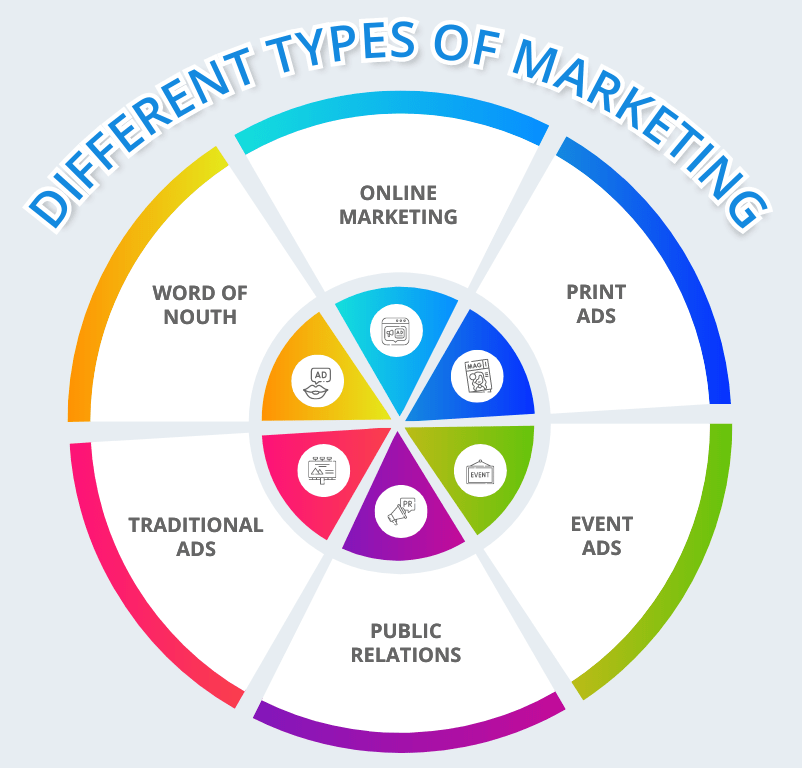Are you a small business owner looking to make the most out of your marketing efforts? If so, you’ve come to the right place. In this comprehensive guide, we’ll walk you through the basics of small business marketing, giving you the essential tools and tips to help you create an effective marketing plan and maximize your reach. From setting goals and objectives to understanding your target audience and budgeting effectively, this guide will provide you with everything you need to make your small business marketing efforts a success. So, let’s get started!
Why marketing is important for small businesses
Marketing is an essential part of any business’s success, no matter the size. Small businesses often have limited resources, but marketing can help them reach more potential customers and build their brand. Effective marketing can help small businesses stand out from the competition, build relationships with customers, and increase their overall sales.
One of the most effective marketing tools for small businesses is a business mailing list. A business mailing list can help you reach existing and potential customers, allowing you to stay top-of-mind and build relationships. You can use the list to send out promotions, coupons, or newsletters, as well as updates on new products or services. Building a mailing list is a great way to get people interested in your business and help them keep up with what you have to offer.
The different types of marketing

When it comes to marketing your small business, there are many different types of marketing you can use. It’s important to have a well-rounded approach that includes a variety of tactics so that you can reach the widest audience possible. The following are some of the most popular types of marketing that you can use to promote your small business:
- Digital/Online Marketing: This includes all forms of digital marketing, such as SEO, PPC, email campaigns, content marketing, social media marketing, and more. These tactics allow you to reach a global audience with relative ease, while also allowing you to be very targeted in who you are targeting.
- Print Advertising: This includes newspaper and magazine ads, direct mail campaigns, and more. While it isn’t as effective as digital marketing, it still has its place in an overall marketing strategy.
- Public Relations: This is a great way to get your message out in the form of press releases, interviews, speaking engagements, and more. It’s a great way to increase visibility and create a positive perception of your business.
- Events: Events can be a great way to engage with potential customers and create buzz around your business. From trade shows and conferences to meetups and seminars, events are a great way to spread the word about your business.
- Word of Mouth: Word of mouth marketing is one of the oldest forms of marketing and is still very effective today. Encouraging customers to leave reviews or share their experiences on social media can be a great way to generate interest and attract new customers.
- Traditional Advertising: This includes TV and radio spots, billboards, and other traditional forms of advertising. This type of marketing is great for creating brand awareness, but it can be expensive.
Small Business Marketing Strategies
No matter which type of marketing you choose to use, it’s important to remember that they should all work together to create a cohesive strategy that will drive results for your small business.
1. Developing your marketing strategy
Developing an effective marketing strategy for your small business is essential for achieving success. The strategy should include understanding your target market, determining the best ways to reach them, setting realistic goals and objectives, and measuring success.
When it comes to target markets, you need to determine who your ideal customer is and what they need from your product or service. What do they look like? How old are they? What do they do for a living? How do they behave? Once you understand these demographics, you can then use this information to develop an effective marketing strategy that reaches your customers.
Once you have identified your target market, you will need to determine the best methods to reach them. This may include social media, email campaigns, content marketing, pay-per-click advertising, or any other number of tactics. Choose the right combination that works for your business and be sure to measure its success over time.
Setting realistic goals and objectives is important when developing your marketing strategy. Goals should be specific, measurable, attainable, relevant, and time-bound (SMART). Set goals for each of the channels you are using, such as the number of followers on social media or the number of sales generated from a particular campaign.
Finally, measuring success is key. Track metrics such as website traffic, engagement with your social media posts, number of sales made from campaigns, or other key performance indicators (KPIs) relevant to your business. Analyzing this data will allow you to adjust your strategy and ensure it is achieving the desired results.
2. Creating your marketing plan
Creating a successful marketing plan is essential for small businesses to reach their desired goals. A marketing plan helps you define your objectives, create strategies to achieve those objectives, and track the progress of your efforts.
The first step in creating a marketing plan is to identify your target market. This includes researching who your customers are, what they need, and how they can be reached. Once you’ve identified your target market, you can move on to determining your objectives and budget.
Your objectives will depend on the type of business you have and the goals you want to achieve. For example, if you’re a restaurant, your objective might be to increase sales or expand your customer base. Whatever your objectives, make sure they’re realistic and measurable.
Your budget should be based on your objectives and the amount of money you can afford to spend. You should consider all the costs associated with running a marketing campaign including advertising, production, printing, mailing, etc.
Once you have determined your objectives and budget, it’s time to develop your strategy. Your strategy should focus on reaching your target market using the right channels, such as print ads, online ads, radio spots, social media campaigns, etc. Consider which channels are most effective for reaching your audience and how much each one will cost.
Finally, you need to create an action plan that outlines how you’ll implement your marketing strategy. This should include detailed steps on when and how each activity will be carried out. Once you have completed your marketing plan, you can start implementing it and tracking the progress of your efforts.
3. Implementing your marketing plan
Once you have developed a marketing strategy and created a marketing plan, it’s time to get to work and implement it. This is an important step in ensuring your success as a small business, as your plan will only be effective if you take action and follow through with it.
Start by reviewing the components of your plan in detail. Make sure you have all the necessary materials and resources to make each marketing activity successful. Establish timelines for each activity and assign tasks to team members.
Once you have everything in place, it’s time to launch your marketing activities. You may want to start with small-scale activities such as distributing flyers or launching a social media campaign. Focus on activities that require less effort and money and measure the results before investing in larger campaigns.
Monitoring the results of your marketing efforts is also essential. Track customer engagement, website visits, sales numbers and other metrics to measure the success of your efforts and adjust your strategy if needed. Remember to document all the activities you undertake, so you can review them and make changes accordingly.
Lastly, don’t be afraid to take risks. Experimenting with different tactics can help you determine what works best for your business. Be creative and be open to trying new ideas. With the right approach, you’ll be able to successfully implement your marketing plan and reach your goals.
4. Evaluating your marketing efforts
Once you’ve implemented your marketing plan, it’s important to take some time to review the results. This is key for understanding what’s working and what isn’t. There are several ways to evaluate your marketing efforts, and here are a few of the most common methods:
Analyzing Your Conversion Rate: Your conversion rate refers to how many of your leads turn into paying customers. By keeping track of how often leads convert into sales, you can get a better idea of what marketing efforts are most successful.
Reviewing Your Social Media Engagement: Keeping an eye on your social media engagement is a great way to see what kind of content resonates with your target audience. Pay attention to likes, shares, comments, retweets, and other forms of engagement to better understand what type of content works best for your business.
Checking Your Website Traffic: Knowing how much traffic your website is getting gives you a sense of how well your marketing strategies are working. Use analytics tools to get an overview of where the traffic is coming from and where it’s going.
Measuring Brand Awareness: Brand awareness is a measure of how familiar people are with your business. Keeping track of brand awareness metrics can help you understand how effective your marketing is and whether or not it’s reaching the right people.
Evaluating Your ROI: Calculating your return on investment (ROI) is an important part of evaluating your marketing efforts. To get a good picture of your ROI, you need to look at how much money you’re spending on marketing and compare it to how much money it’s generating.
By taking the time to evaluate your marketing efforts, you’ll be able to make adjustments as needed and ensure that you’re getting the most out of your marketing budget. With the right evaluation process in place, you can refine your strategy and continue to grow your small business.
Conclusion
Marketing is essential for small businesses to gain exposure and reach potential customers. To get the most out of your marketing efforts, it’s important to understand the different types of marketing and to develop a comprehensive strategy and plan that aligns with your business goals. Once you have a plan in place, you can begin implementing it, making sure to evaluate its effectiveness throughout the process. With a well-thought-out approach and a clear understanding of what you hope to achieve, you will be able to create a successful small business marketing plan that will help your business reach new heights.


